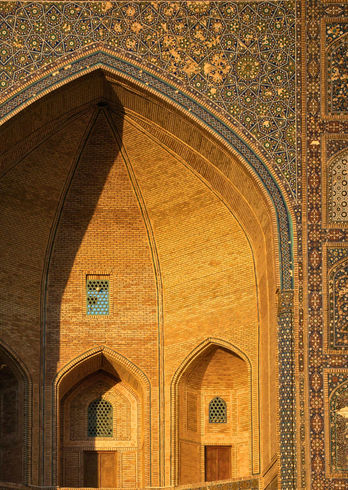Bukhara
Step Into the Enchantment of Bukhara
Tucked away in the heart of Central Asia, Bukhara is a city where history breathes in every corner and time seems to stand still. With over 2,500 years of heritage, this UNESCO World Heritage site is a masterpiece of ancient architecture, culture, and spiritual depth. Known as the “Pillar of Islam” and a center of knowledge on the Silk Road, Bukhara is a treasure trove of timeless beauty and cultural richness.
Journey Through the Ages
Bukhara has long been a beacon of trade, religion, and scholarship. As one of the most important stops on the Silk Road, the city flourished with the comings and goings of merchants, scholars, and travelers from across the globe. The labyrinthine streets and grandiose monuments of this ancient city still echo the footsteps of its storied past. At the heart of Bukhara lies the Kalyan Minaret — a towering masterpiece that has stood as a guardian of the city for nearly a millennium, embodying its enduring legacy.
Architectural Gems
Bukhara’s skyline is adorned with stunning monuments that reflect its rich history and Islamic heritage. The Ark of Bukhara, a massive fortress, speaks of ancient power and resilience. The intricate beauty of the Ismail Samani Mausoleum, an architectural marvel from the 10th century, is a symbol of the city’s cultural zenith. Meanwhile, the Lyab-i Hauz complex, with its tranquil pond surrounded by historic madrasahs, offers a serene escape into Bukhara’s spiritual soul.
.jpg)
Bazaars of Bukhara
.jpg)
A Historical Crossroads of Trade Bukhara’s bazaars have served as the lifeblood of the city for centuries. These covered, domed markets were the heart of commercial activity, where caravans loaded with exotic goods arrived from distant lands. Today, they still buzz with life, offering everything from traditional crafts to mouthwatering street food, while preserving the same sense of timelessness that has made them famous. The bazaars are characterized by their distinctive architecture — domed structures that provide shelter from the intense sun, with narrow passageways and vibrant stalls that invite visitors to explore. The atmosphere is rich with the sounds of bargaining, the scent of spices, and the sight of colorful textiles, offering an authentic sensory experience of Bukhara’s past.
The Mausoleum of the Samanids
A Timeless Masterpiece
The Mausoleum of the Samanids in Bukhara is a 10th-century architectural gem and one of the oldest Islamic monuments in Central Asia. Built as the family tomb of Ismail Samani, the founder of the Samanid dynasty, it reflects a perfect blend of pre-Islamic and Islamic architectural traditions.Renowned for its intricate brickwork, the mausoleum’s geometric patterns play with light and shadow, showcasing the artistry of its builders. Its harmonious proportions and innovative design have made it a lasting symbol of the Samanid Golden Age, representing the cultural and artistic achievements of early Islamic civilization.
.jpg)
Plaza Poi Kalon
.jpg)
.jpg)
The Kalan Mosque and Minaret
Icons of Bukhara
The Kalan Mosque, paired with the iconic Kalan Minaret, is one of Bukhara’s most remarkable architectural ensembles. Built in the 16th century, the mosque’s vast courtyard and intricately tiled facade have made it a centerpiece of Islamic worship, accommodating up to 12,000 worshipers.
The Kalan Minaret, built in 1127, stands as the mosque’s towering companion. At 45.6 meters high, it was once a beacon for travelers along the Silk Road. Its intricate brickwork and tapering design are a marvel of medieval engineering, earning it the name “The Tower of Death” in folklore. Together, the mosque and minaret embody the spiritual and architectural brilliance of Bukhara’s Golden Age.
Chor Minor
.jpg)
The Unique Charm of Bukhara Tucked away in the labyrinthine streets of Bukhara, Chor Minor, meaning “Four Minarets,” is one of the city’s most enchanting landmarks. Built in the early 19th century by a wealthy merchant, Khalif Niyazkul, this unique structure served as the entrance to a now-lost madrasa (Islamic school). Its distinctive design and intimate scale set it apart from Bukhara’s grandiose monuments, making it a favorite among visitors. Architectural Features Chor Minor’s most striking element is its four small turquoise-domed towers, which give the building its name. Each minaret is uniquely decorated, reflecting a blend of architectural influences from Central Asia, Persia, and India. Unlike traditional mosques, these towers are not minarets in a functional sense; instead, they symbolize the diversity of cultures that converged on the Silk Road. The central structure is a modest yet elegant building with intricate brickwork and traditional Islamic motifs. While its original madrasa complex no longer exists, Chor Minor retains its charm as a standalone structure, exuding an air of mystery and history. Cultural and Historical Significance Chor Minor is not just an architectural curiosity but also a testament to the cosmopolitan spirit of Bukhara in the 19th century. Its design reflects the city’s role as a crossroads of ideas and cultures. The monument served as both a spiritual and educational hub, embodying the values of learning and tolerance that characterized the Islamic Golden Age.
A Peaceful Retreat Surrounded by a quiet courtyard with ancient mulberry trees, Chor Minor offers a serene escape from the bustling bazaars of Bukhara. Visitors can explore the interior of the structure, which includes a small chamber that was likely used for study or prayer. Climbing the stairs inside offers a closer view of its intricate domes and a glimpse into the craftsmanship that went into its creation.











